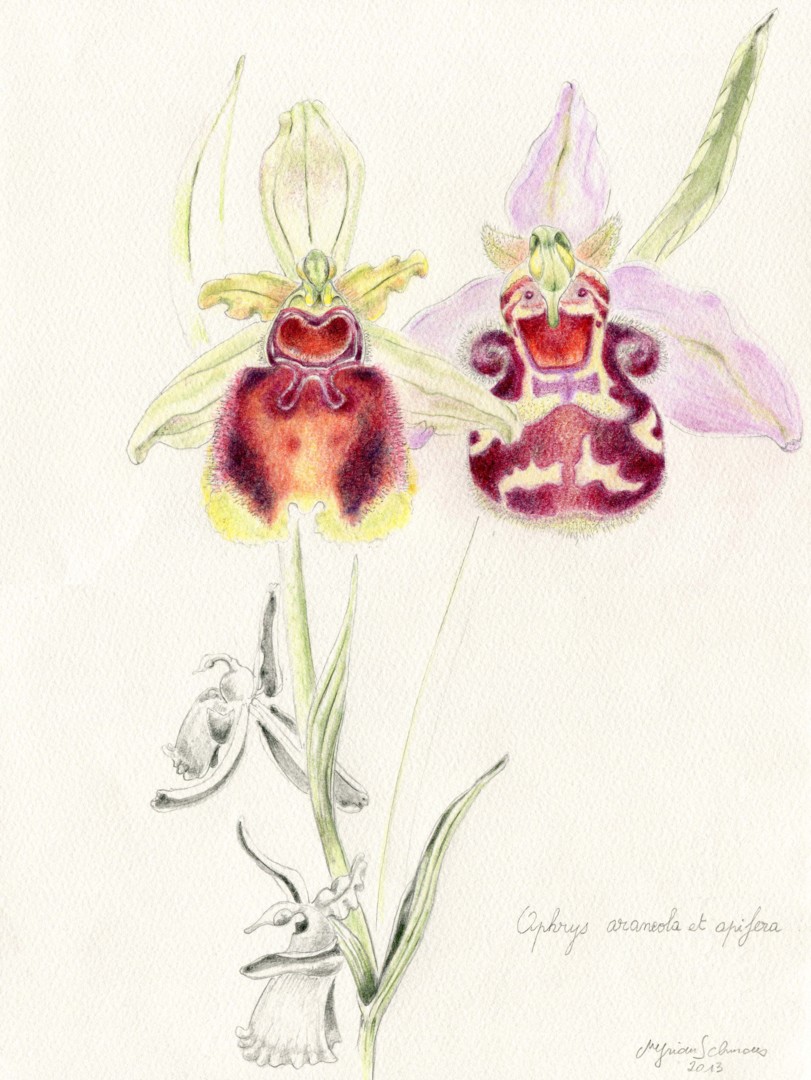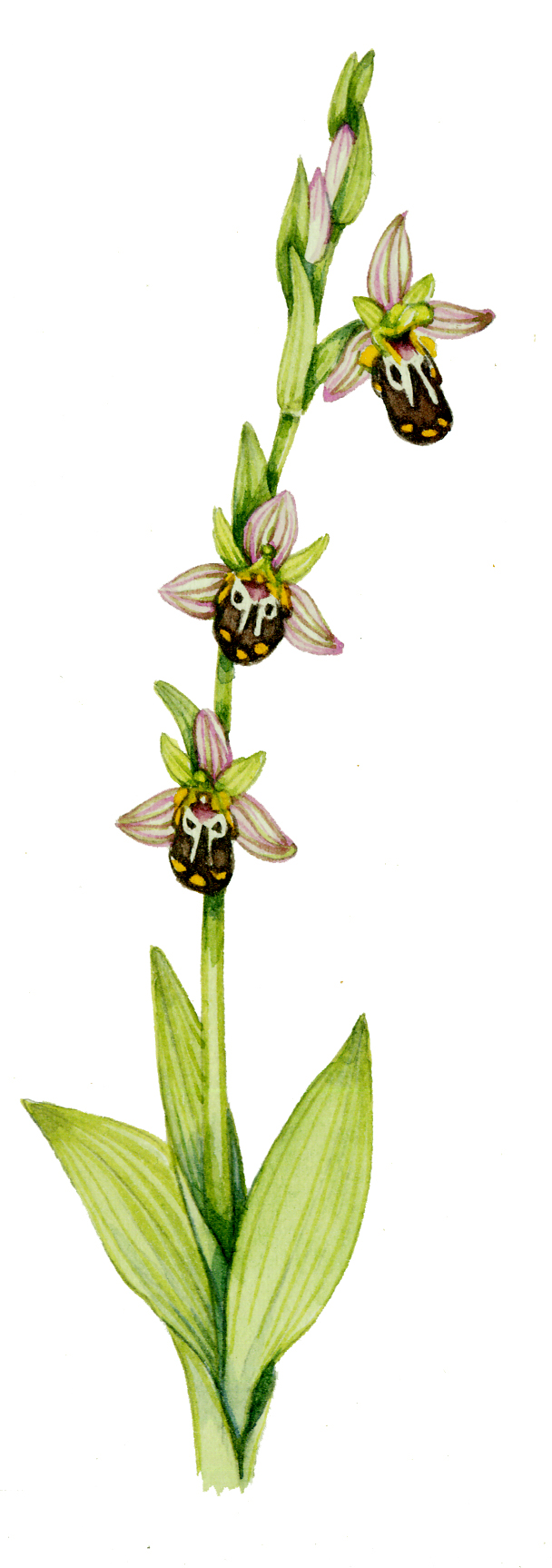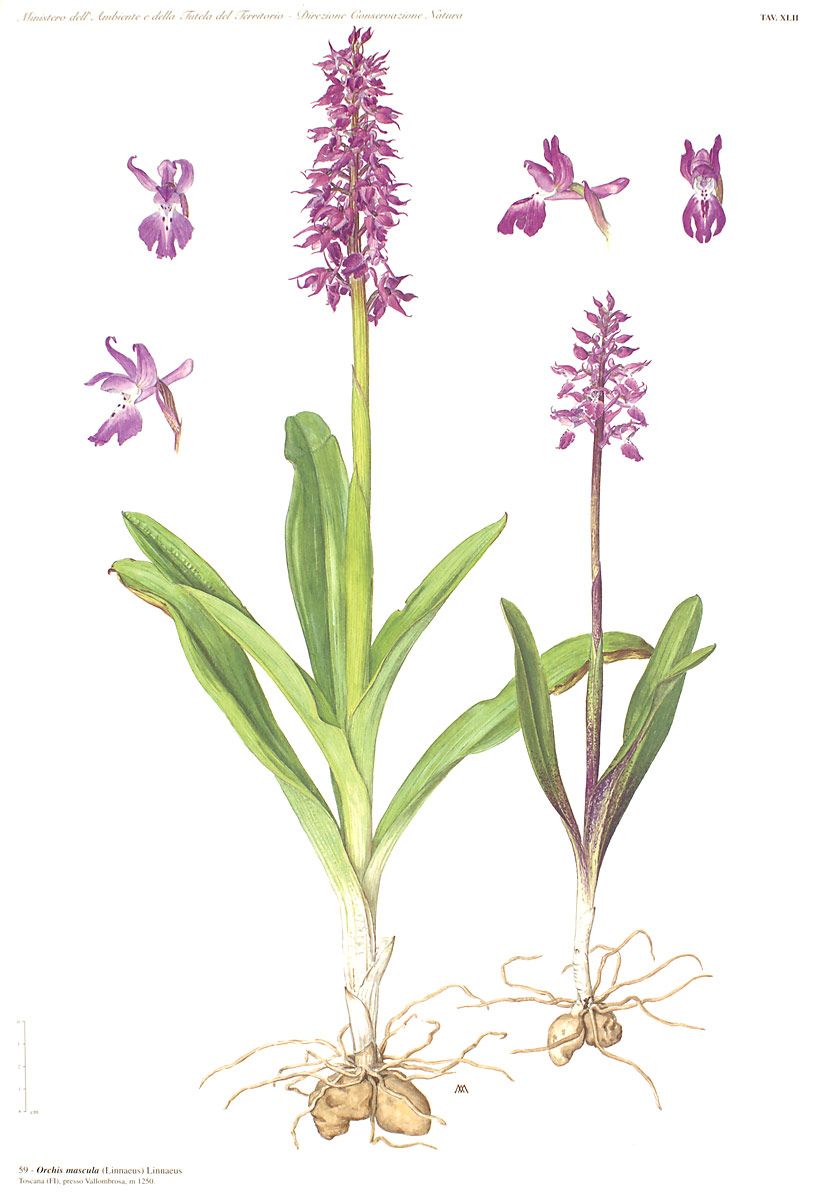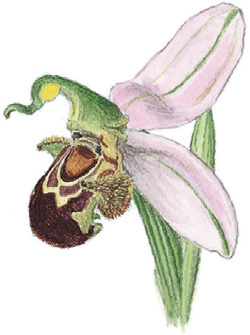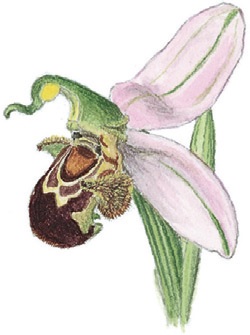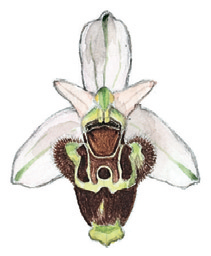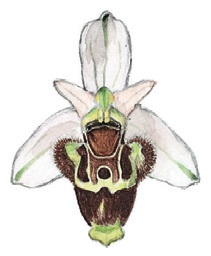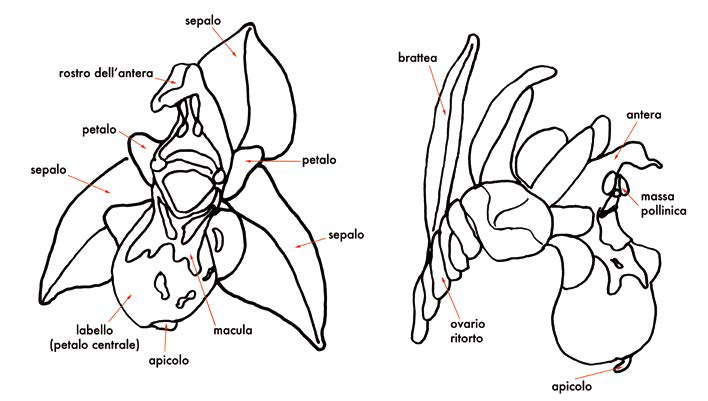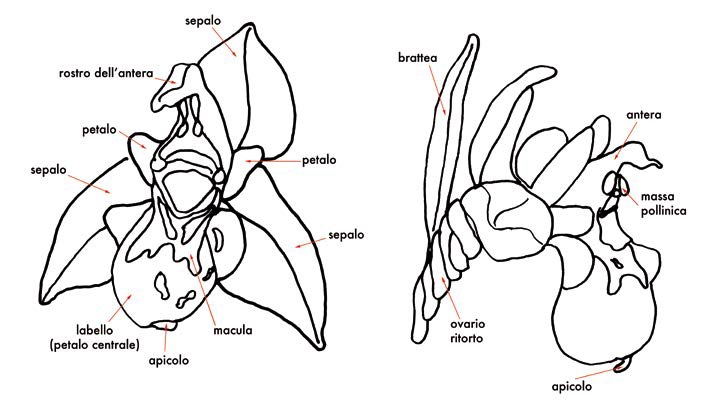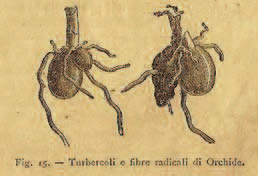Along the paths and country roads, between the end of April and June, you can see a significant number of flowering orchids. Most species are born in open environments, such as grasslands and pastures. The territory of Capolona is rich also for the characteristics of the soils; the orchids, in fact, prefer clayey and calcareous soils.
In Italy you can find over 200 species of orchids.
Their flower consists of six pieces; the outer ones are called 'sepals' and the inner ones 'petals'. The median petal is called 'labellum'; it constitutes the most showy part of the flower. It can have very different shapes and designs, depending on the species. It can be hairless or covered with thick down. The orchids have the male and female organs fused in a single structure called 'gynostemium' and in many species there is only one fertile stamen that occupies the center of the flower.
In almost all species the flowers are united in inflorescences and give shape to a spike; this may have a cylindrical, conical, globular or spiral shape.
Pollen is not powdery as in most plants, but occurs in granules that are gathered in small masses. These are equipped with an adhesive disk and a filament; the whole is called 'pollen'.
The fruit of orchids is a 'capsule that can contain a few thousand seeds. These are so small and light that they are easily dispersed by the wind at a great distance.
The seeds are almost free of reserve substances and can germinate only with the help of a fungus thanks to a mutual symbiosis called 'mycorrhiza'. The fungus initially provides nourishment to the embryo and when the orchid is developed begins a reciprocal exchange of substances. The plant gives away the complex molecules it produces and the fungus increases its ability to absorb the mineral elements needed for photosynthesis.
From germination to flowering can take a long time, even 3-4 years.
The underground systems of the orchids consist of real roots and modified parts of the stem. They have the so-called rhizotubers that can present with various shape and size; from these filiform roots develop. Small groups of genetically identical individuals may originate from the fragmentation of rhizotubers and rhizomes.
In some cases the hypogeal tubers have the shape of the testicles; this seems to have inspired the term Orchid since the term 'Orchis' refers to this male part.
The stem is normally not branched. The leaves can be at the base of the stem, gathered in a rosette, or along it. Their shape may vary depending on the species; some can be modified in bracts wrapping the stem.
Pollination takes place through insects (entomophilous). In the species of the genus Ophrys, the flowers recall the appearance of an insect having eye-shaped points, petals resembling antennae and lobes whose shape imitates folded wings. The male insect lands on the flower with the intention of mating and in doing so the pollen sticks to it; this is then transferred to another flower. Some species even secrete the same pheromone that is used by female bees to attract males. The already pollinated flowers then produce the same hormone that the females emit to signal that they have already been fecundated. Males thus lose interest in these flowers and go to others, thereby increasing the number of plants visited.
In species that attract pollinators with nectar, the labellum contains nectars in its innermost part; in this way the insect is forced to load with pollen in reaching them. The species that do not produce nectar and that do not have an insect-shaped flower, host colonies of aphids which, sucking the sap, emit a sugary substance (honeydew) that attracts the bumblebees inside the flower.
The relationship between orchids and insects must be traced back at least 15-20 million years ago. To this period, in fact, belonged a fossil bee found inside the amber bearing on the back the pollen masses of such plants.
Man showed interest in orchids over 3000 years ago. These plants have always symbolized sensuality, elegance, harmony and physical and spiritual perfection. The doctors and alchemists of antiquity believed that orchids had aphrodisiac and healing potential of female infertility. In the Greek world the legend was told of Orchis, a beautiful young man, son of a satyr and a nymph, who seduced a priestess of Dionysus. His boldness cost him his life and his remains gave birth to orchids.
Suggestive is also the legend that sees protagonist the Slipper of Venus (Cypripedium calceolus), the most famous and spectacular orchid in Europe; it is said to originate from the shoe of the goddess Aphrodite.
In Asia, orchids were associated with spring celebrations and used to ward off evil influences. Their flowers are often depicted in Chinese and Japanese art.
Perhaps the most unusual use of orchids is the preparation of Salep, a typical Turkish drink, which has as its main ingredient a flour obtained by shredding their tubers. 1000 orchids are needed to produce 1 kg of such flour.
